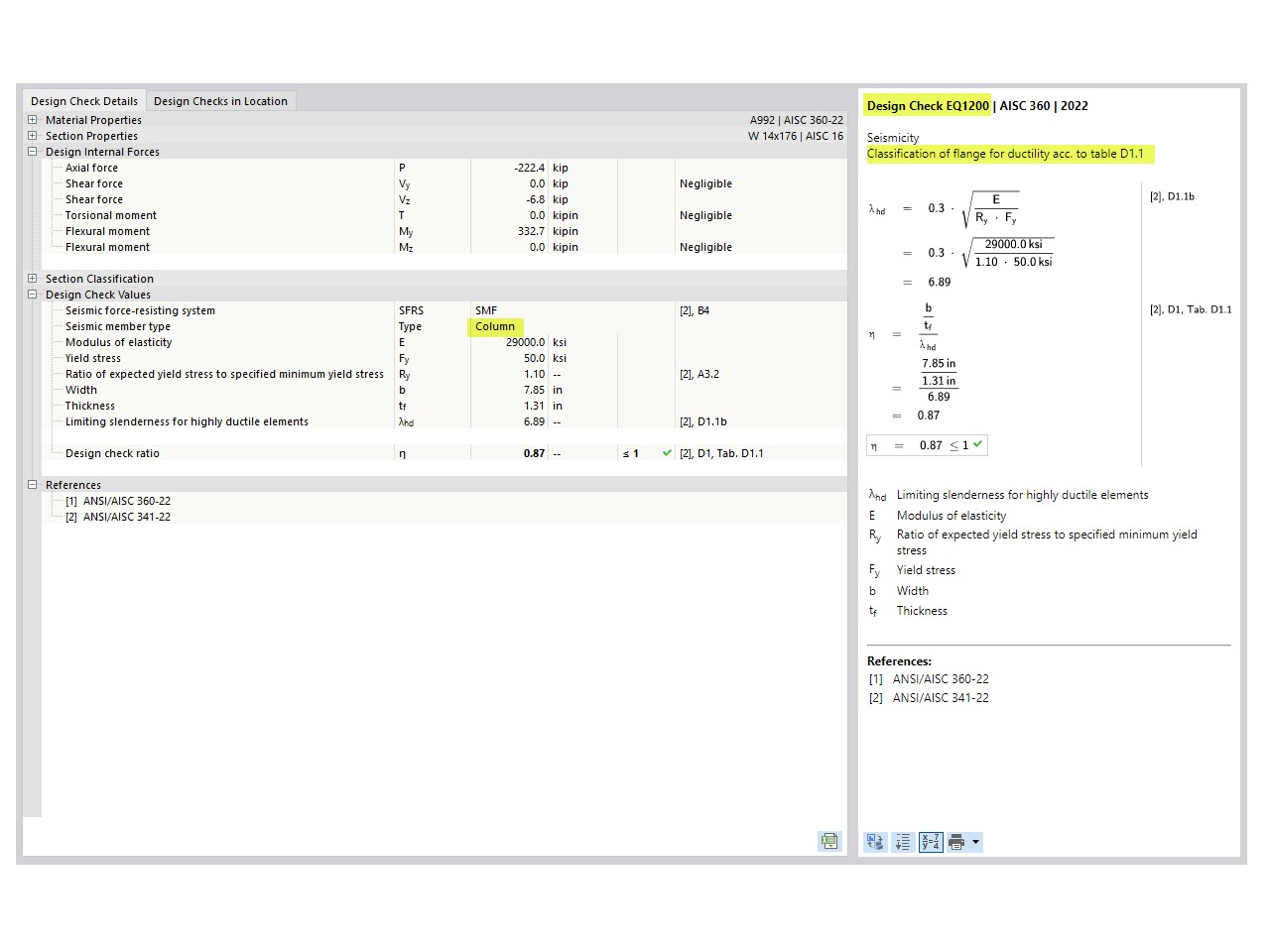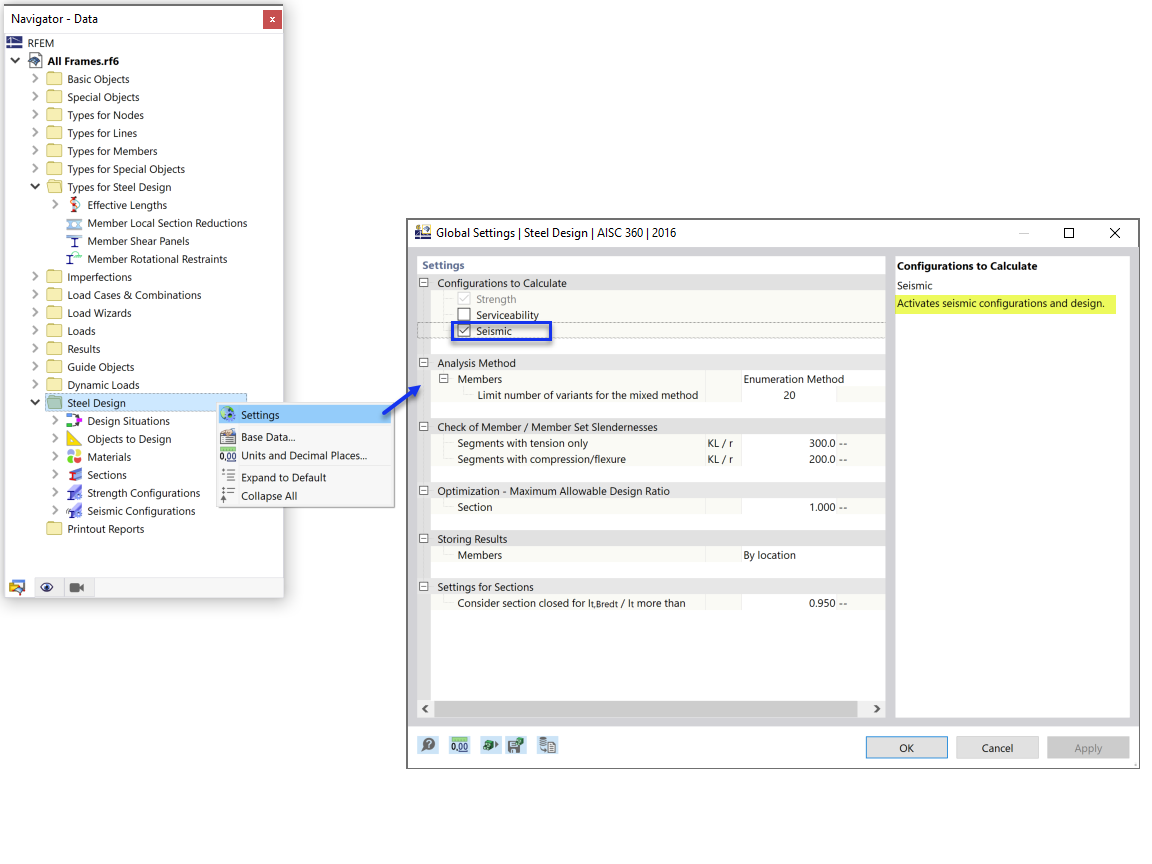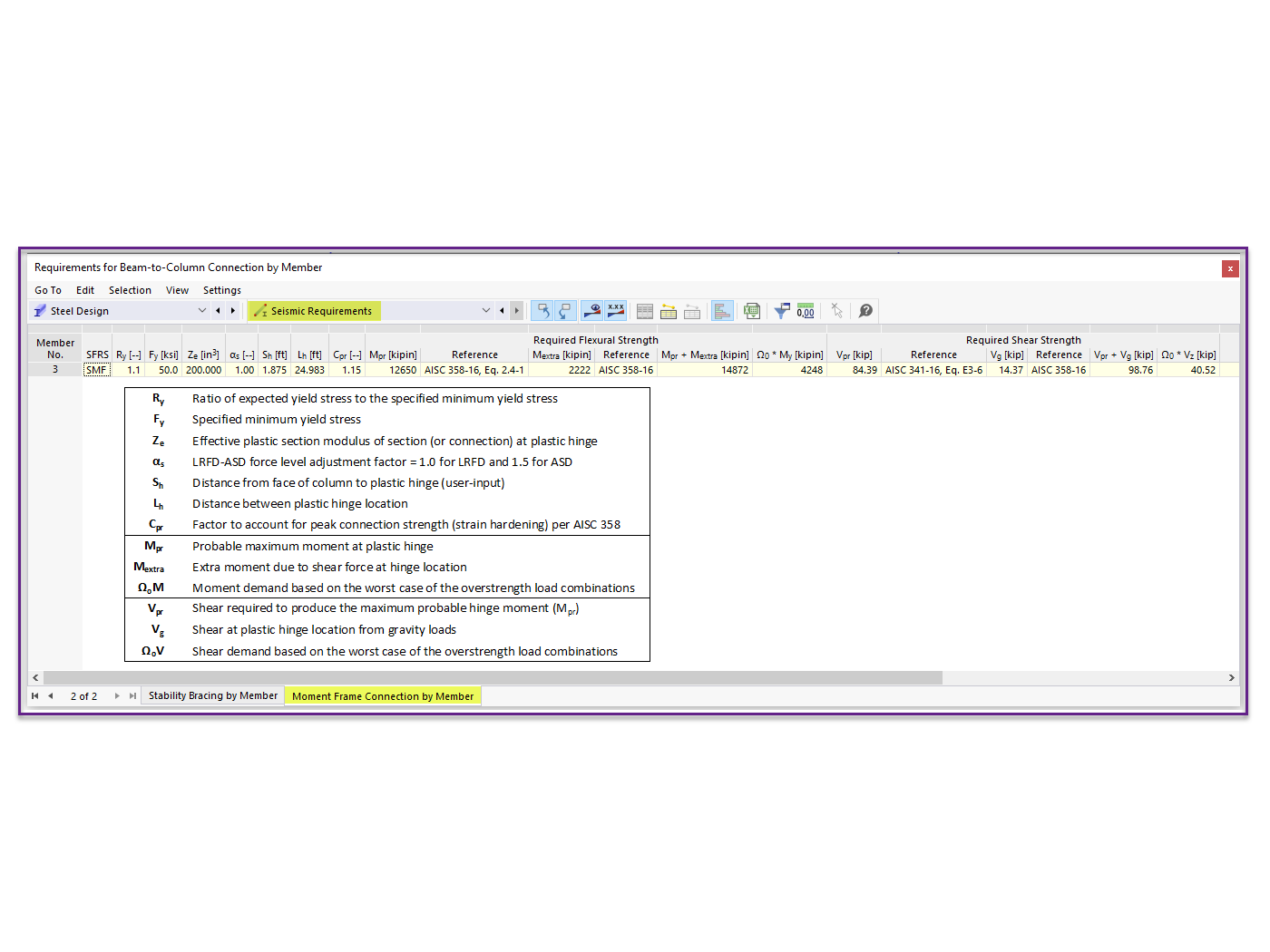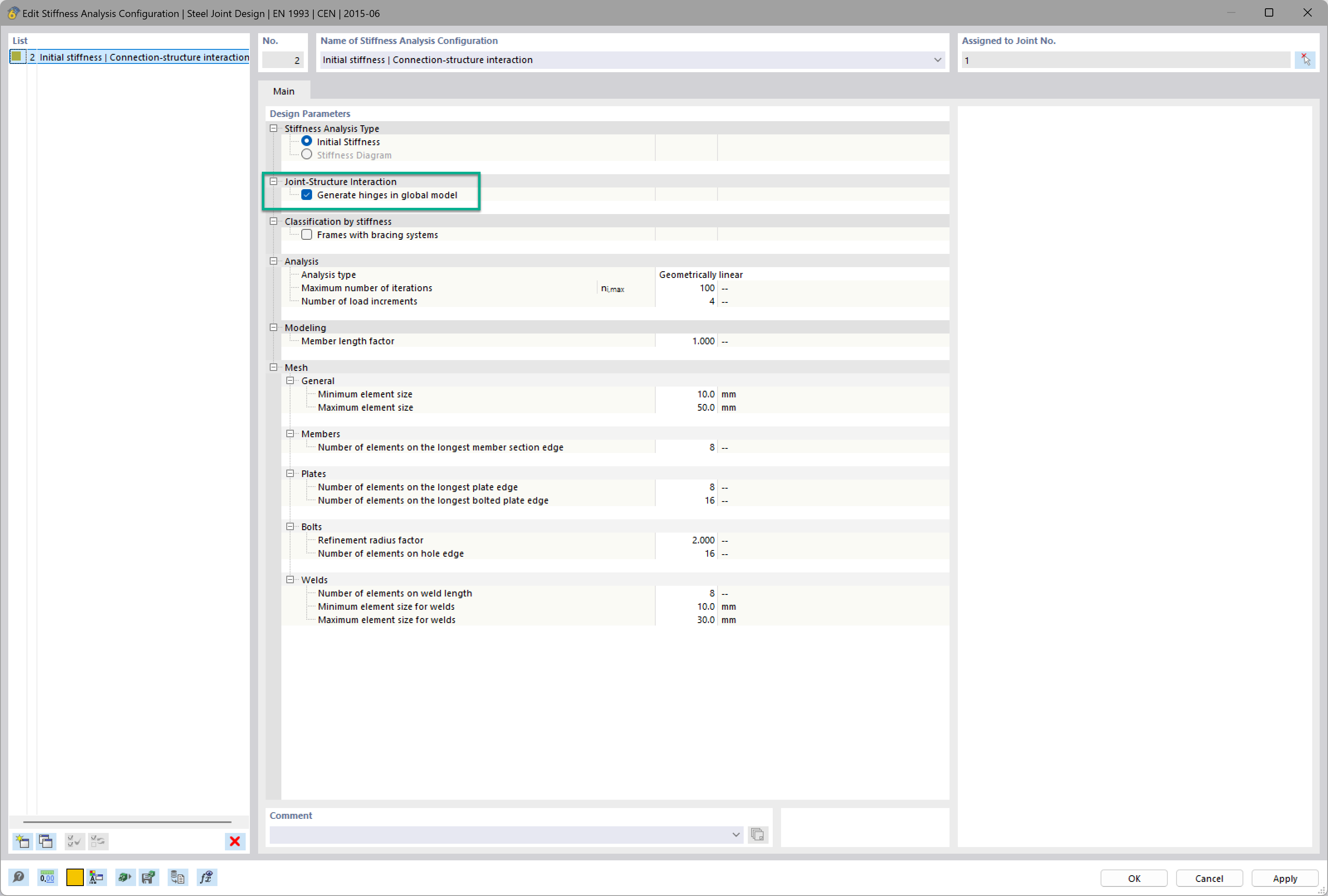Reduced Stiffness According to ACI 318 and CSA A23.3
Referencing Sec. 6.6.3.1.1 and Sec. 10.14.1.2, the gross section area Ag and moment of inertia Ig are permitted for elastic analysis with factored load levels applied. Determining factored load levels is done utilizing Table 6.6.3.1.1(a) from ACI 318-14 [1] and the table located under Sec. 10.14.1.2 in CSA A23.3-14 [2], where the element type and its condition are taken into consideration. The multiplying factors reduce the moment of inertia while the gross section area stays constant. These factors were conservatively enforced by the various concrete standards to account for section loss due to concrete cracking.
According to ACI 318-14 Sec. 6.6.3.1.1, the moment of inertia and gross area of members/surfaces shall be calculated in accordance with Tables 6.6.3.1.1(a) or 6.6.3.1.1(b) unless a more rigorous analysis is required. Similarly, CSA A23.3-14 lists a table which includes the corresponding multiplication factors applied to each moment of inertia.
Different conditions such as "cracked" and "uncracked" only affect concrete elements categorized under "wall". When calculating the moment and shear for a cracked wall, a factor of 0.70 is applied to the gross moment of inertia Ig. If the wall is indicated to crack, based on the modulus of rupture, the moment of inertia is calculated as 0.35Ig for further analysis.
Unlike walls, when analyzing other elements such as columns, beams, flat plates, and flat slabs, the moments of inertia do not change based on cracked or uncracked assumptions. The reduced value is based on a single reduction factor listed below.
- Columns: Ig = 0.70Ig
- Beams: Ig = 0.35Ig
- Flat plates and flat slabs: Ig = 0.25Ig
For all concrete elements, including walls, a factor of 1.0 is applied to the gross section area Ag. Therefore, the gross area of the concrete section remains unchanged. With regard to ACI 318-14, moment of inertia values taken from MacGregor and Hage (1977) [3] are multiplied by a stiffness reduction factor of φk = 0.875 referenced from R6.6.4.5.2. For example, the moment of inertia can be calculated as such:
0.875(0.80Ig) = 0.70Ig
RFEM Adoption
RFEM seamlessly allows the user to modify the flexural or axial stiffness of any concrete member or surface to be considered for the analysis and design. The component types can be set for each element under the "Modify Stiffness" options within the program.
Clicking twice on a single or multiple member/surface opens the "Edit Member/Surface" dialog box. Within this window, the modified stiffness options are found under the "Modify Stiffness" tab. Here, the user has the option to select from multiple "Definition Types" such as ACI 318-14 Table 6.6.3.1.1(a) and CSA A23.3-14 Table 10.14.1.2. Figures 01 and 02 showcase the previously mentioned standards and their factors relating to the stiffness reductions directly from ACI 318-14 and CSA A23.3-14.



























.png?mw=350&hash=c6c25b135ffd26af9cd48d77813d2ba5853f936c)





























_1.jpg?mw=350&hash=ab2086621f4e50c8c8fb8f3c211a22bc246e0552)






.png?mw=600&hash=49b6a289915d28aa461360f7308b092631b1446e)


















